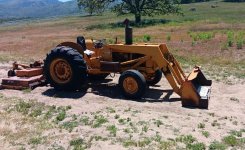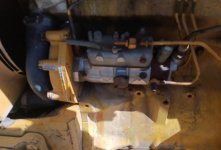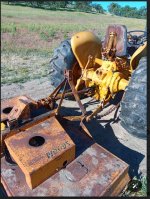Jim.ME
Well-known Member
- Location
- central ME
If it hasBattery cables were hooked up, but ignition was out ,wire to fuel was disconnected, alt, starter solenoid were all disconnected..
Diesels are fuel injected; a gas engine of that vintage would have a carburetor. A diesel has a switch, but it does not have an ignition system. The switch energizes a solenoid inside the injection pump to turn the fuel on. If the fuel solenoid is bad, it could prevent the engine from running or it might not shut the fuel off to stop the engine. It would not seem the solenoid is preventing it from starting since you originally posted it started by itself and ran for about an hour, then you took a bolt out of the fuel pump to stop it. Which fuel pump did you take a bolt out of to stop the engine? The engine has a transfer (aka lift) pump on the right side of the engine just forward of the starter. The injection pump is on the left front corner of the engine. Depending on which pump and which bolt you took out to stop the engine, you might have run it out of fuel, or it might have damaged something. If it ran out of fuel you may need to bleed the system before it will start.Thank you I will do that, first thing in the A.M have class right now. I did manage to wire up the ignition today. Hopefully it is correct. Its a1963 JD 300 fuel injected diesel. Do you know If the fuel solenoid is bad would that keep feeding fuel to the motor? Thank you for your time have a nice day.
If not wired correctly it would be possible for the alternator to back feed the injection pump shutoff solenoid, but you have said there were no wires on anything so back feed from the alternator does not seem likely. What I mentioned before about a resistor bypass wire from the starter solenoid to the coil only applies to a gasoline engine, not to a diesel.
The JD 300 was built 1965 to 1973 so if it is a 300 it does not appear it would be a 1963 and if you are 100% sure it is a 1963 tractor it would seem it is something other than a 300.
What are you using as a guide to do the wiring as you said you do not have any manuals?







